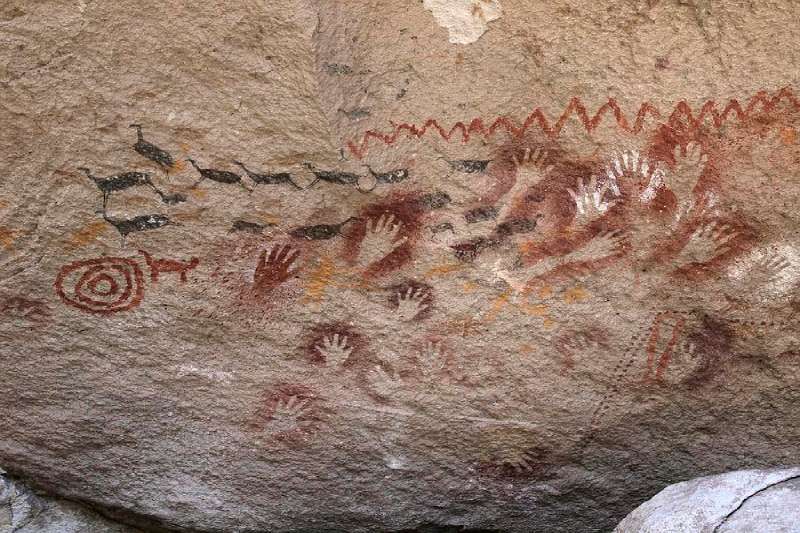8,200-Year-Old Rock Art Found in Argentina’s Patagonia

One of the oldest known instances of rock art in Patagonia, one of the last regions on Earth to be populated by humans, was found in a remote cave in Argentina, it was recently discovered. It was previously believed that the cave paintings date back a few thousand years.
There are about 900 paintings of people, animals, and abstract patterns in the Cueva Huenul 1 site. A new study that was published in Science Advances discovered that one enigmatic comb-like design was created approximately 8,200 years ago.
For thousands of years afterward, black pigment was used by cave artists to reproduce the same design. It’s possible that this design was employed for communication when climate change was occurring.
Roughly 12,000 years ago, people first settled in Patagonia, an area near the southernmost edge of South America. Patagonia started to get more arid about 10,000 years ago, which made it harder to live there. According to the cave’s archaeological record, the location was deserted during this period.
Radiocarbon dating was used to determine the artworks’ age. Additionally, archaeologists found that burned shrubs or cacti provided the charred wood used to create the black picture.
Over 3,000 years, the comb pattern might have helped to retain the people’s oral traditions and collective memories. Although it currently acts as a documentation of how individuals have addressed the prior climate change concerns, the motif’s meaning and intent are still unknown.